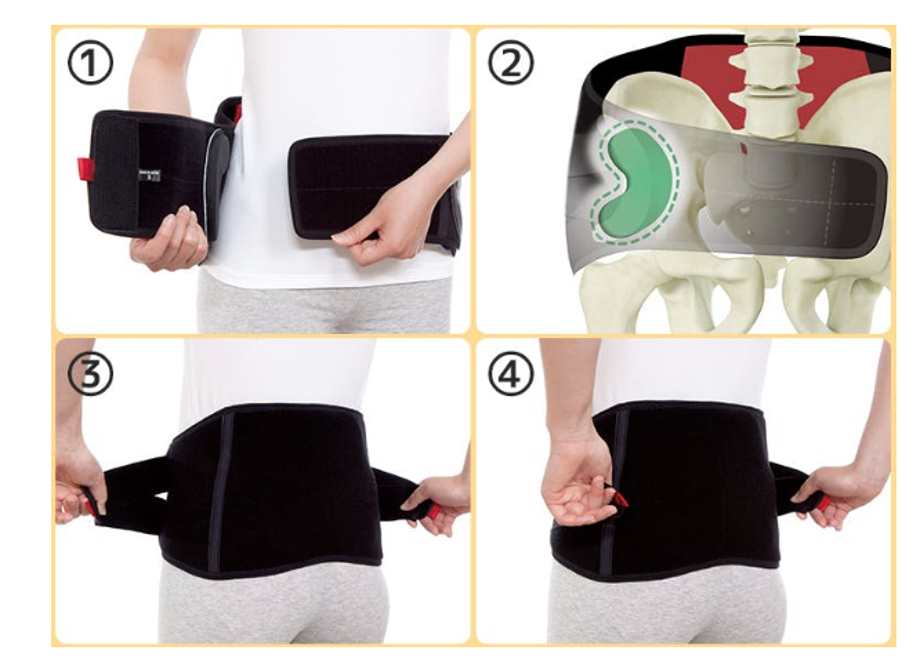Paper of the month March 2024
Hip-sacroiliac joint-spine syndrome in total hip arthroplasty patients.
Kaneuji A, Fukui M, Takahashi E, Sanji Y, Hirata H, Kawahara N.
Sci Rep. 2024 Feb 15;14(1):3813.

Hip-sacroiliac joint-spine syndrome in total hip arthroplasty patients.
Kaneuji A, Fukui M, Takahashi E, Sanji Y, Hirata H, Kawahara N.
Sci Rep. 2024 Feb 15;14(1):3813.
The first author of this paper, Prof. Kaneuji, is very famous Japanese hip surgeon in the world. His name is well known as the originator of a novel minimally invasive spherical periacetabular osteotomy. J Bone Joint Surg Am. 2021 Sep 15;103(18):1724-1733
Dr. Kaneuji has promoted awareness of sacroiliac joint (SIJ) dysfunction in the Japanese hip societies (Figure 1). He is certainly the most outstanding hip surgeon today. And fortunately for us, he is a member of SIMEG and will also be in Graz to speak. He will show us his new pelvic belt (Pelsapo®, see image) and the mobilization technique for SIJ dysfunction he developed.

He compared the extent of SIJ degeneration in between the group of patients with osteoarthritis of the hip (OA) and osteonecrosis of the femoral head (ON). And the prevalence of SIJ degeneration was assessed in patients with hip pathologies combined with lumbar spondylolisthesis or degenerative scoliosis.
In this study, 69 OA and 69 ON with THA performed were compared. In Japan, there are many patients with hip OA secondary to developmental dysplasia of the hip (DDH), actually 66 out of 69 OA were secondary OA.
The prevalence of SIJ degeneration was higher in cases of THA for OA than for ON. Regarding spine diseases, there were total 9 spondylolisthesis cases and 38 scoliosis cases in this study. These cases showed higher prevalence of irregular SIJ images.
This study examined the relationship between the hip joint, the SIJ, and the spine. However, it evaluated degeneration of the SIJ on imaging, and it is not clear whether the patients were symptomatic or not. Therefore, the term hip-SIJ-spine syndrome, which includes the syndrome, could not yet be derived from the results of this study. Of course, there is no doubt that these three syndromes are likely to be related in clinical practice.
DDH may be a dysplasia of the entire pelvic ring, not just an acetabular problem, as is lumbosacral transitional vertebra (LSTV). In LSTV cases, the SIJ area is sometimes smaller, and unusual pitfalls should be noted during SIJ fusion surgery. Kurosawa D, et al. J Orthop Case Rep. 2019;10(1):54-57.
I would like to learn from Prof. Kaneuji about pelvic and SIJ morphology characteristics in DDH.
In DDH, OA changes may occur early in response to loading because the SJ may be incomplete from the initial stage. The question is at what point does the SIJ become symptomatic? There are cases of young patients with femoral acetabular impingement who initially present with severe SIJ pain but no groin pain and only slight imaging changes of the SIJ, which should be noted. On the other hand, patients with hip OA in their 60s and 70s don't present with severe SIJ pain even though they have SIJ degeneration.
Prof. Kaneuji, thank you for publishing this paper and bringing this issue to our attention. I am sure that many patients would benefit from having a hip surgeon who is interested in and practicing on the SIJ!
Daisuke Kurosawa

Leave a Comment
Comment by AYUMI KANEUJI |
Thank you for selecting my paper as the paper of the month. I will present the contents of this paper at the SIMEG meeting in Graz.
I am a hip surgeon, and I have discovered that many patients in Japan with hip dysplasia also have concurrent SIJ disorders. I believe that inward pelvis is the primary characteristic and issue in hip dysplasia. Cases of acetabular dysplasia often exhibit inward pelvis, with not only lateral but also anterior deficient bone coverage of the acetabulum. I suspect the possibility of global unmatured pelvis, not just of the acetabulum. Inward pelvis tends to exert force away from the sacroiliac joint towards the iliac side, potentially leading to stretching of the posterior ligaments and susceptibility to excessive tension and load. Additionally, poor stability of the SIJ, difficult support due to taper structure, and increased shear forces may be present. Even in patients aged 10-20 without SIJ osteoarthritis who undergo periacetabular osteotomy, SIJ symptoms can occur. Therefore, I believe the primary issue lies in posterior ligament overload and subsequent micro-instability rather than joint incongruence or osteoarthritis. This has been suggested by finite element analysis (Toyohara R, Kaneuji A et al, Sci Rep, 2022). Considering this, the effectiveness of a pelvic belt that promotes outward pelvis direction, facilitating opening of the ilium posteriorly, becomes understandable.
See you in Graz, all.